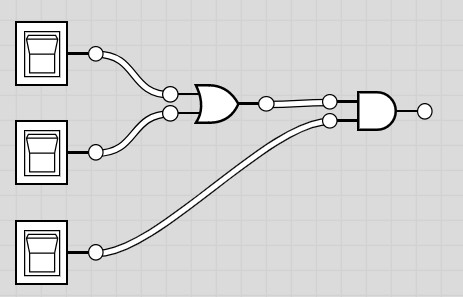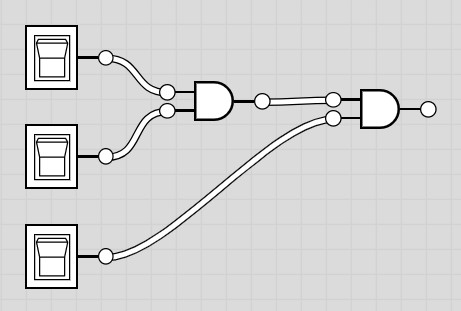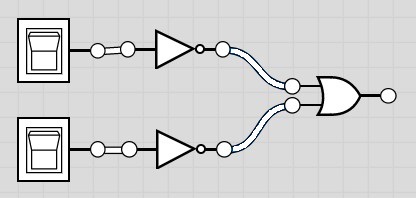Topic 1a
Logic Gates
Prior to Class
By the end of this topic students should be able to:
- Explain the general functionality of a(n) [AND | OR | NOT | XOR ] gate.
- Given two inputs to an [AND | OR | XOR ] gate, identify the output of the gate.
- Given one input to a NOT gate, identify the output of the gate.
- Given up to three inputs to a circuit consisting of a combination of up to three gates, identify the output of the circuit.
The notation used above is used to combine similar Learning Objectives. When you see:
- Explain the general functionality of a(n) [AND | OR | NOT | XOR ] gate.
- Explain the general functionality of an AND gate.
- Explain the general functionality of an OR gate.
- Explain the general functionality of a NOT gate.
- Explain the general functionality of an XOR gate.”
Assigned Reading
- Section 1.1, pp 26-28 plus Figure 1.2 on p 29 in your book
In class
Activity
Checking for Understanding
Answer the following questions.
- "If a 0 goes in, a 0 comes out" is the rule for which logic gate?
- "If a 1 goes in, a 1 comes out" is the rule for which logic gate?
- "If a 0 goes in, a 1 comes out" and "if a 1 goes in, a 0 comes out" are the rules for which logic gate?
- What input patterns will cause the following circuit to produce an output of 1?

- What input patterns will cause the following circuit to produce an output of 1?

- What input patterns will cause the following circuit to produce an output of 1?

Extra Help
- To check your understanding of the answers to the previous questions, please refer to this answer key.
- If you are still confused about any of these problems, feel free to watch this Walkthrough video explaining all six CFU Questions.
NOTE: While not assigned, some people complete the Q&E problems on pp 33 and 34. Unfortunately, there is an error in problems #4a and #4b. Their images are reversed. That is, the image with 4a on page 33 belongs with 4b on page 34 and vice versa (the image on page 34 should be with 4a on page 33).
Further Information
If you understand this material and are using this in your own courses, you might find the following material beneficial. This material is a supplement to this course and is completely optional. Your understanding of this is not assessed during the Competency Demos.- Video
- Crash Course Computing #3 - Boolean Logic and Logic Gates
- This video used to be part of our course. It's a great explanation of how the logic gates actually work. But that material was just a bit beyond the learning objectives of our course and caused some confusion for those just getting started. But we still think this is a great video!
- Basic Gates vs. Universal Gates
- While we talk about seven types of gates, we can actually build several of these from combinations of the others.
- In this reading we explain the typical concept of Universal Gates
- Flip-flops
- We don't think it is essential that you understand flip-flops for this course. But you may have heard about them. And you may even be teaching a course that discusses them with your students. In this case, you might want read the explanation for this topic from your textbook.
- Reading: Section 1.1 in your textbook, pp 28-32.
- We don't think it is essential that you understand flip-flops for this course. But you may have heard about them. And you may even be teaching a course that discusses them with your students. In this case, you might want read the explanation for this topic from your textbook.